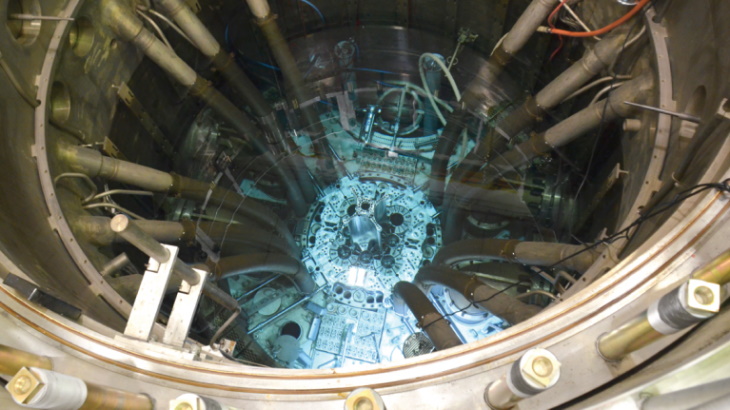The Advanced Test Reactor (ATR) at the US Department of Energy's Idaho National Laboratory, is preparing to return to service after the completion of an 11-month core overhaul. The reactor - described as the most powerful materials test reactor in the world - is expected to resume normal operations by late Spring.

The reactor's internals have been changed out during the overhaul (Image: INL)
ATR is a pressurised water reactor which produces neutrons, rather than heat, and is used to perform irradiation testing of many nuclear materials and fuels that support a wide range of goals, including the US Navy's nuclear-powered fleet, the development of accident-tolerant fuels, advanced fuels for small modular reactors and microreactors, and production of plutonium-238 for future NASA deep-space missions. These very high levels of neutron irradiation cause strain or microscopic damage to the reactor's internal components, particularly its beryllium reflectors.
The core internals changeout - or CIC - overhaul enables the components that endure the most wear and tear during routine operation to be replaced, as well as providing an opportunity to replace and upgrade other systems and infrastructure within the reactor building and around the ATR complex, many of which can only be maintained and repaired during plant outages.
The CIC overhaul needs to be carried out roughly every ten years to maintain peak performance. This is the sixth time that the ATR - which entered service in 1967 - has undergone the process.
Now that the core overhaul is complete, ATR enters a 50-day testing and measurement phase to calibrate new instruments and sensors for the reactor's control systems and experiment loops before it returns to service.
Researched and written by World Nuclear News